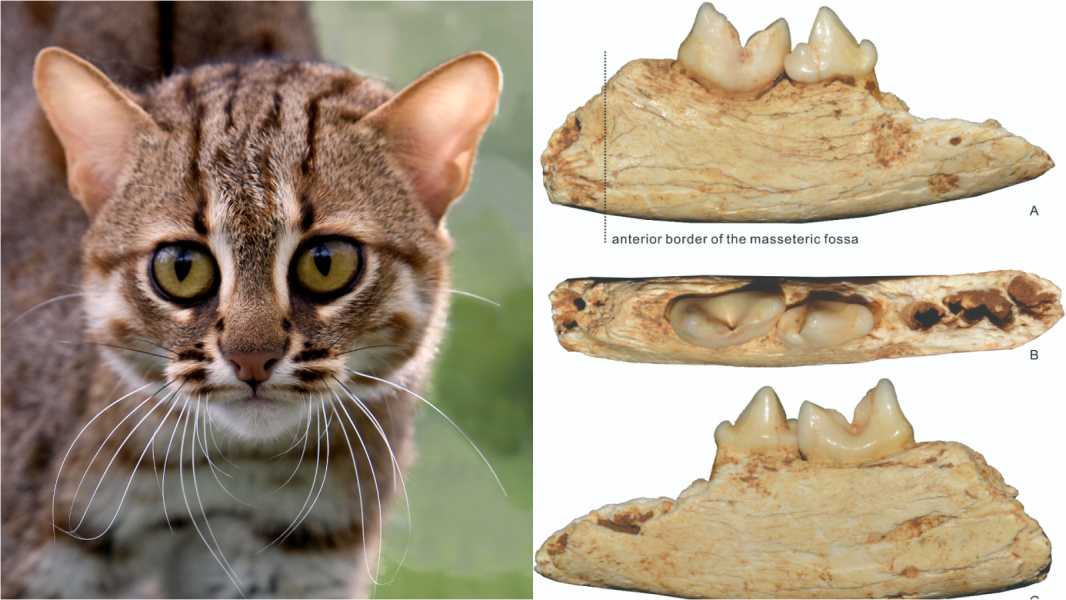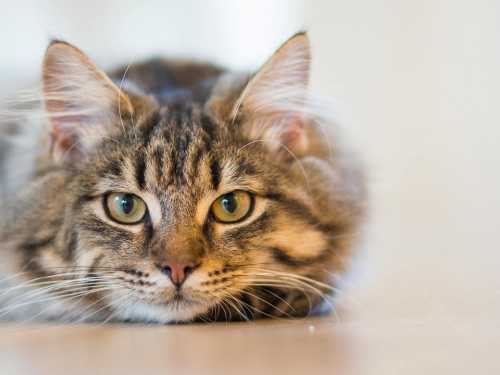
A new species, Prionailurus kurteni, based on fossil remains (right), was found in a cave in China. It is comparable in size to the smallest cats that exist today, such as the rusty-spotted cat (left). (Image credit: slowmotiongli/Getty Images/Jiangzuo et al/Annales Zoologici Fennici, 2024)
Scientists in China have discovered the remains of a cat that was so small it could fit in the palm of your hand. The fossils were found deep in a cave where ancient humans lived.
This miniature cat is the newly described species Prionailurus kurteni, which researchers reported in a paper published November 19, 2024, in the journal Annales Zoologici Fennici. Scientists believe that this extinct animal, which may be up to 300,000 years old, is the smallest cat ever found.
The new species belongs to the leopard cat genus Prionailurus, a family of wild cats that still exist today in South Asia. While most modern leopard cats are closer in size to domestic cats — about 28 inches (70 centimeters) long and weighing at least 4.4 pounds (2 kilograms) — the new species is even smaller.
“This cat is definitely smaller than a domestic cat. It weighs about 1 kilogram [2.2 pounds],” lead study author Qigao Jiangzuo, a researcher at the Chinese Academy of Sciences' Institute of Vertebrate Paleontology and Paleoanthropology, told Live Science.
Currently, the smallest wild cat species are the black-footed cat (Felis nigripes) and the rusty-spotted cat (Prionailurus rubiginosus), which range in length from 13.7 to 20.4 inches (35 to 52 cm) and 13.7 to 18.9 inches (35 to 48 cm), respectively. Based on the fossil remains of the new species, the researchers estimated that the extinct cat may have been about the same size or even smaller than both modern species, with a length of 13.7 to 19.7 inches (50 cm), Jiangzuo noted.
Information about the life and size of this miniature cat was obtained from a single fossilized fragment of its lower jaw with two teeth, found in a paleontological site in eastern China known as Hualundong Cave.
“Cats are common finds in Quaternary [geological period spanning from 2.58 million years ago to today] cave deposits. However, finding such a small cat was a real surprise,” Jiangzuo said.
Fossil remains of leopard cat ancestors are rare because these animals typically live in fragile forest environments where their bones deteriorate more quickly, resulting in only a few prehistoric specimens surviving. However, in the protected environment of the cave, the bones of the newly discovered specimen were preserved, giving researchers a unique opportunity to study them.
Scientists told the South China Morning Post that the prehistoric leopard cat may have entered the cave in search of rats and mice, which may have been feeding on scraps of food left behind by ancient people who once lived in Hualongdong Cave.
The angle of one of the miniature cat's teeth also links it to a common ancestor of domestic cats and the Pallas's cat (Otocolobus manul). Although leopard cats were known to share common ancestry with these other species, the Hualongdong finds provide the first fossil evidence of this connection.
The leopard cat family represents the most diverse genus of cats in the southern and southeastern forests of Asia, with five living species, according to the study.
Sourse: www.livescience.com





